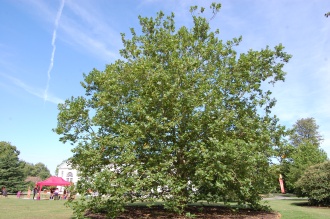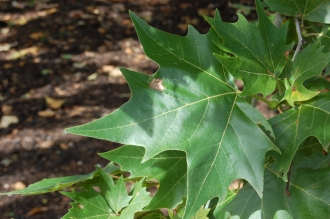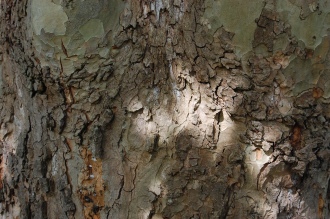Position: Full sun
Flowering period: Late spring
Soil: Moist, well drained
Eventual Height: 30m
Eventual Spread: 30m
Hardiness: 7a, 7b, 8a, 8b, 9a
Family: Platanaceae
Platanus orientalis is a long lived, large deciduous tree. Its mid green leaves are alternate, palmate with up to 7 lobes, coarsely toothed, up to 30cm long and 30cm broad. Its bark is usually flaking, sometimes becoming thick. Its green flowers are round and burr like, appear in clusters of up to 6 and are up to 25mm across.
Platanus orientalis, commonly known as the Oriental Plane, Eastern Plane, Platano, Chenar or Buin, is native to south east Europe and south western Asia.
The etymological root of the binomial name Platanus is derived from the Greek name for Plane tree. Orientalis is from the Latin meaning ‘from the east’.
The landscape architect may find Platanus orientalis useful as a large parkland tree. Once established it is drought tolerant. It is tolerant of urban pollution.
Ecologically, Platanus orientalis provides a valuable source of food in the form of it’s seed for some birds and squirrels during the winter months.
The Royal Horticultural Society has given Platanus orientalis their prestigious Award of Garden Merit in 1993.
Platanus orientalis prefers moist, humus rich, fertile, well-drained soils. It tolerates most pH of soil.
Platanus orientalis requires little maintenance.
![]()
Landscape Architecture








Leave a comment